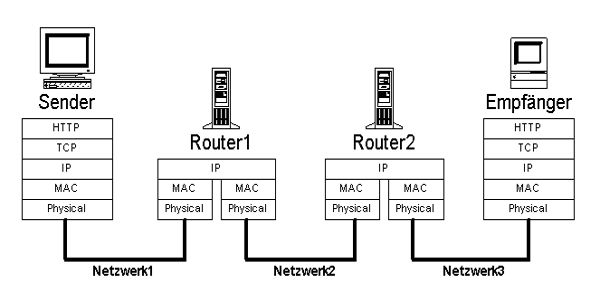IP Routing is a process that sends packets from a host on one network to another host on a different remote network. IP routing is the field of routing methodologies of Internet Protocol (IP) packets within and across IP networks. It is an umbrella term for the set of protocols that determine the path that data follows in order to travel across multiple networks from its source to its destination. This involves not only protocols and technologies but includes the policies of the worldwide organization and configuration of Internet infrastructure. The Internet Protocol (IP) specifies the origin and destination for each data packet. Routers inspect each packet’s IP header to identify where to send them.
IP routing is the process of sending packets from a host on one network to another host on a different remote network. It describes the process of determining the path for data to follow in order to navigate from one computer or server to another.
Data is routed from its source to its destination through a series of routers, and across multiple networks. In each IP network node, IP routing involves the determination of a suitable path for a network packet from a source to its destination in an IP network. The IP Routing protocols enable routers to build up a forwarding table that correlates final destinations with next-hop addresses. It helps you examine the destination IP address of a packet, determine the next-hop address, and forward it.

Networks are separated from each other by specialized hosts, called gateways or routers with specialized software support optimized for routing. Network routing is the process of selecting a path across one or more networks. The principles of routing can apply to any type of network, from telephone networks to public transportation. IP routers use routing tables to determine the next-hop address to which the packet should be delivered.
In routers, packets arriving at an interface are examined for source and destination addressing and queued to the appropriate outgoing interface according to their destination address and a set of rules and performance metrics. The Internet Protocol (IP) specifies the origin and destination for each data packet. Rules are encoded in a routing table that contains entries for all interfaces and their connected networks. Routers inspect each packet’s IP header to identify where to send them. If no rule satisfies the requirements for a network packet, it is forwarded to a default route.
Advantages of IP Routing
- It offers stability
- It provides a robust network
- Offers dynamic routing update of the network paths
- Information is safe while transmitting.
Routing tables can either be static or dynamic. Routing tables are maintained either manually by a network administrator, or updated dynamically with a routing protocol. Static routing tables do not change. A network administrator manually sets up static routing tables. Routing rules may contain other parameters than source and destination, such as limitations on available bandwidth, expected packet loss rates, and specific technology requirements. This essentially sets in stone the routes data packets take across the network, unless the administrator manually updates the tables.
Information Source:
















